This document discusses instructional design history, ADDIE model, backwards design, web accessibility, online accessibility principles, open educational resources, and the importance of rubrics in higher education. It provides definitions and examples of key concepts and emphasizes that online courses should be accessible to all students regardless of ability. Rubrics are important for clearly communicating expectations and standards of achievement in online courses where face-to-face interaction is limited.
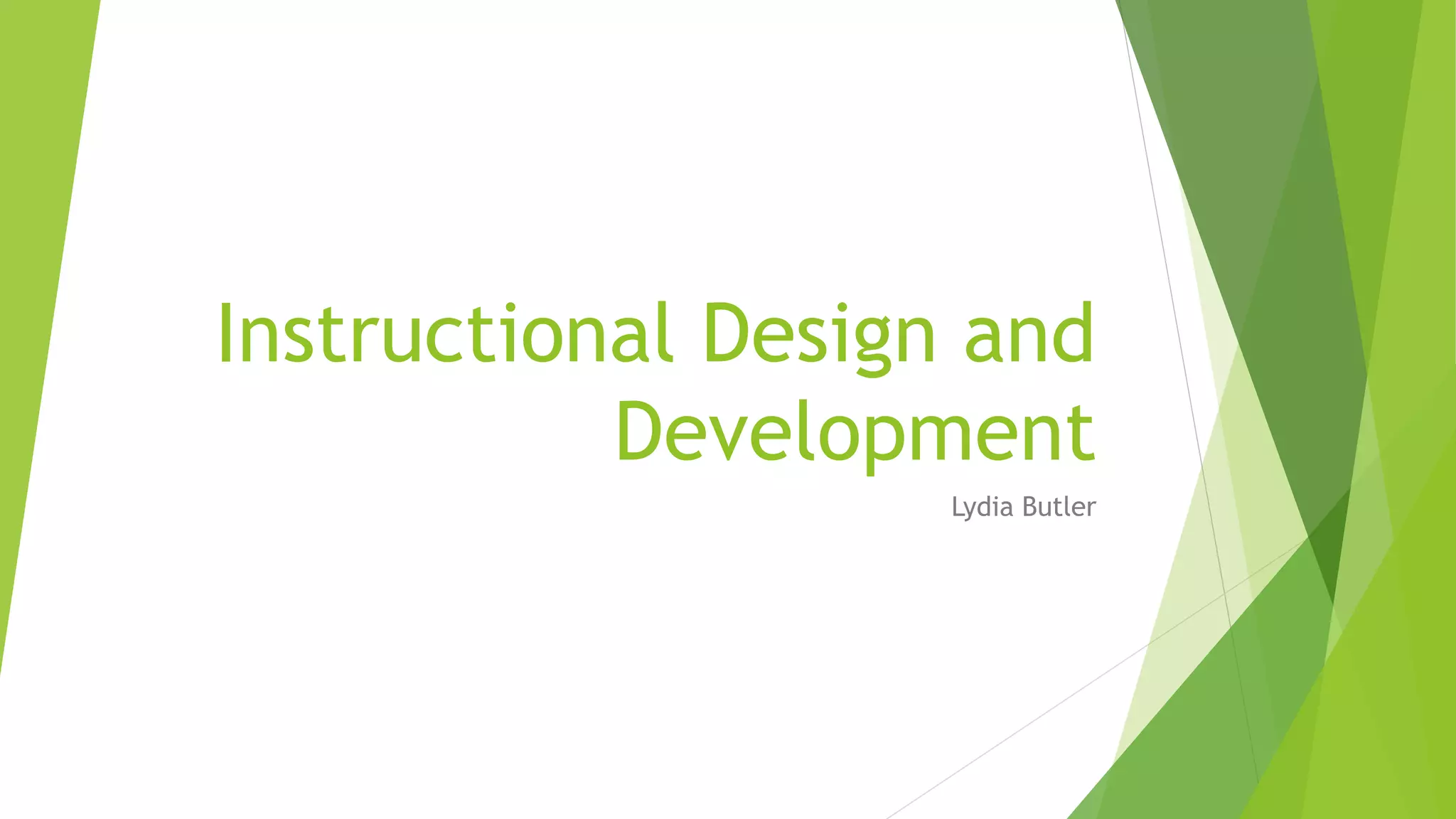
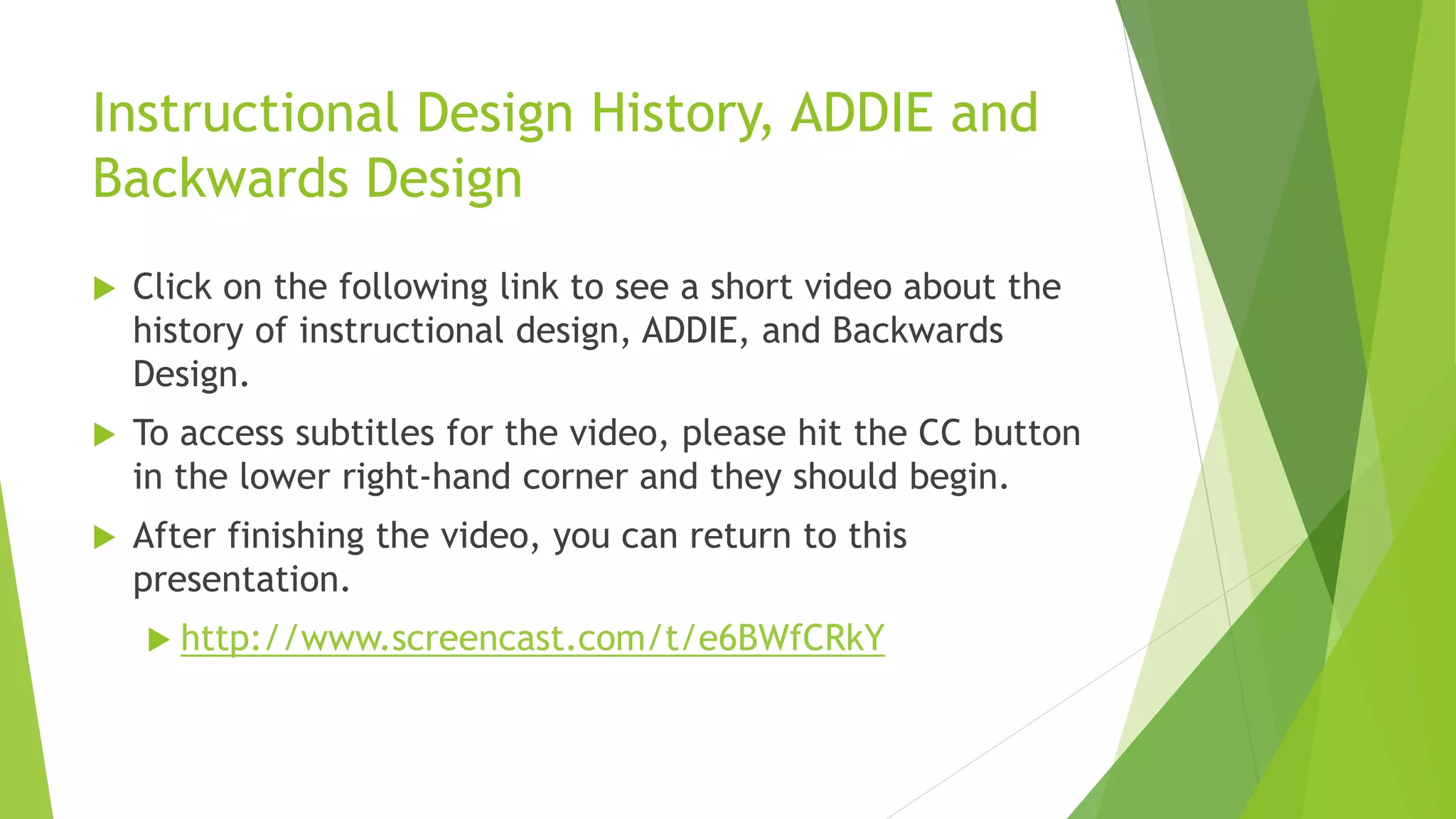
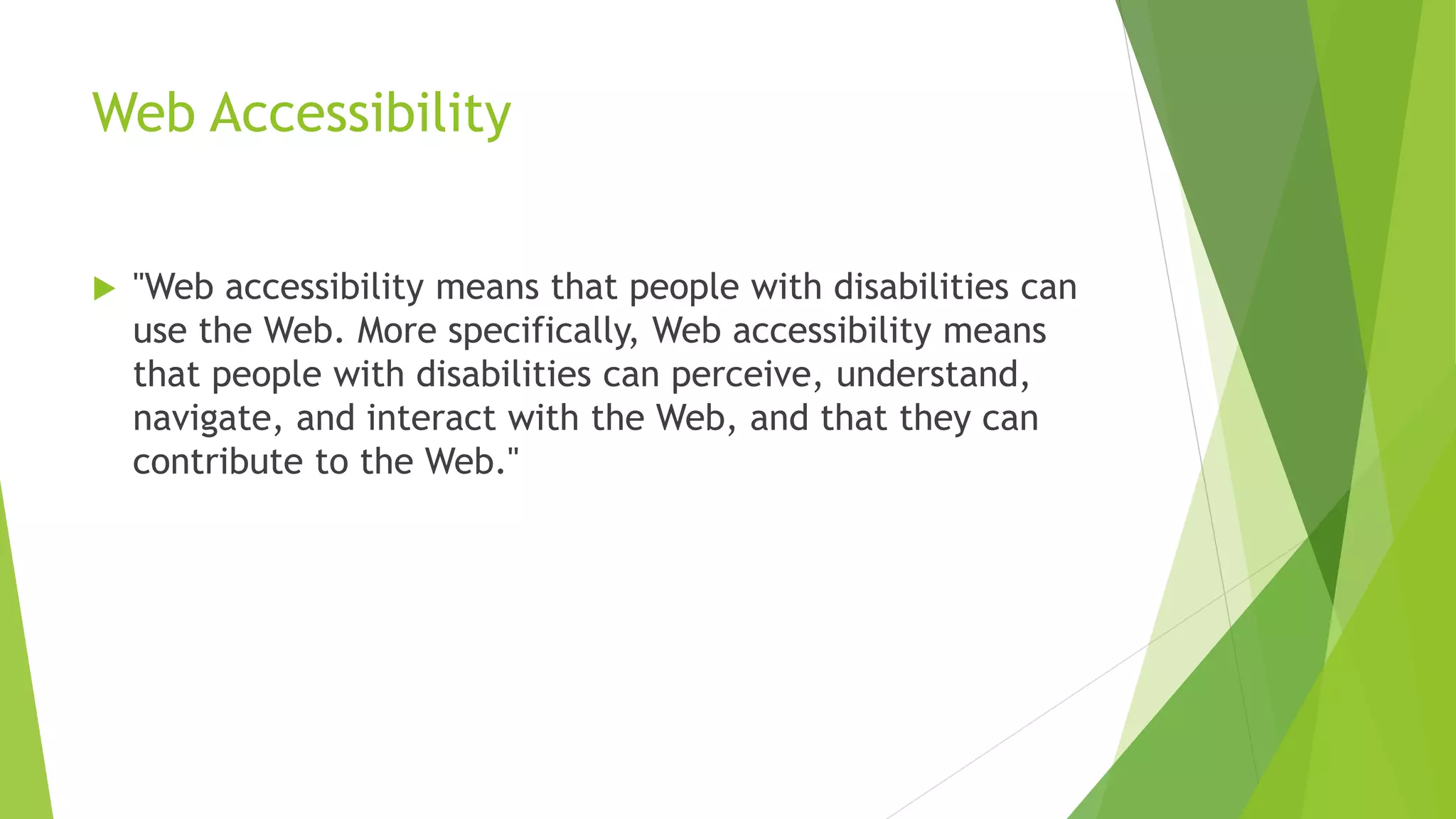
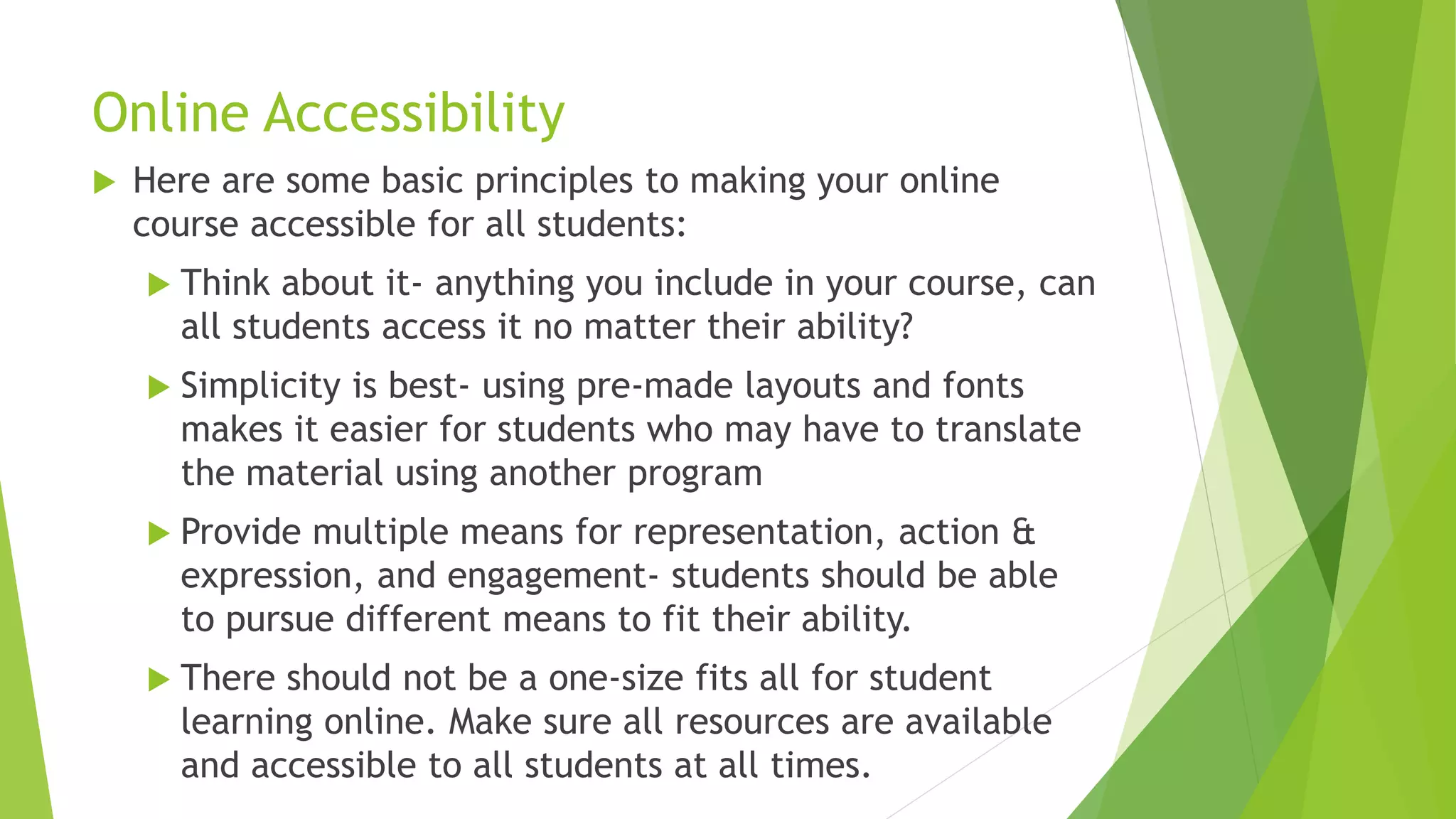
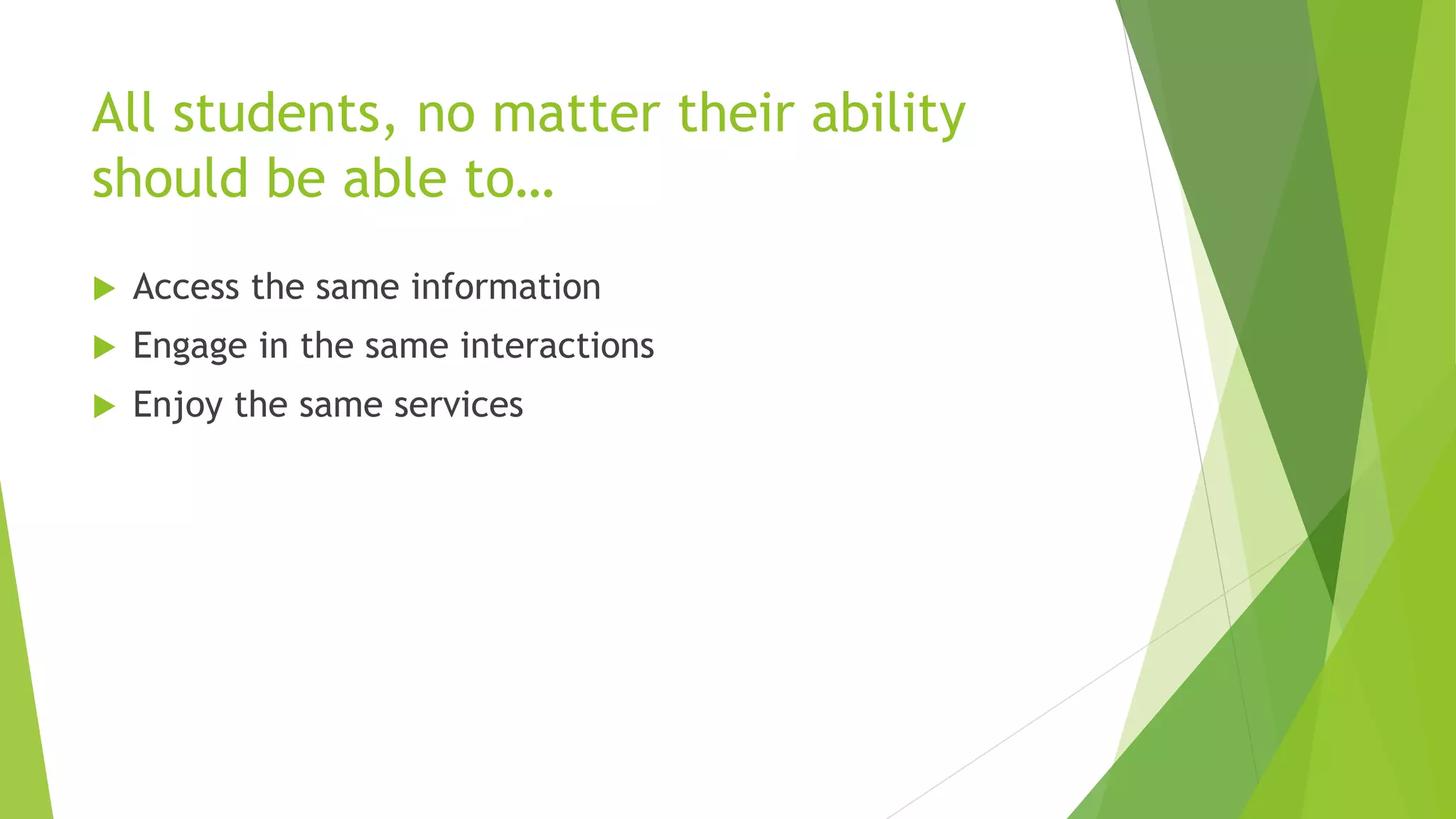
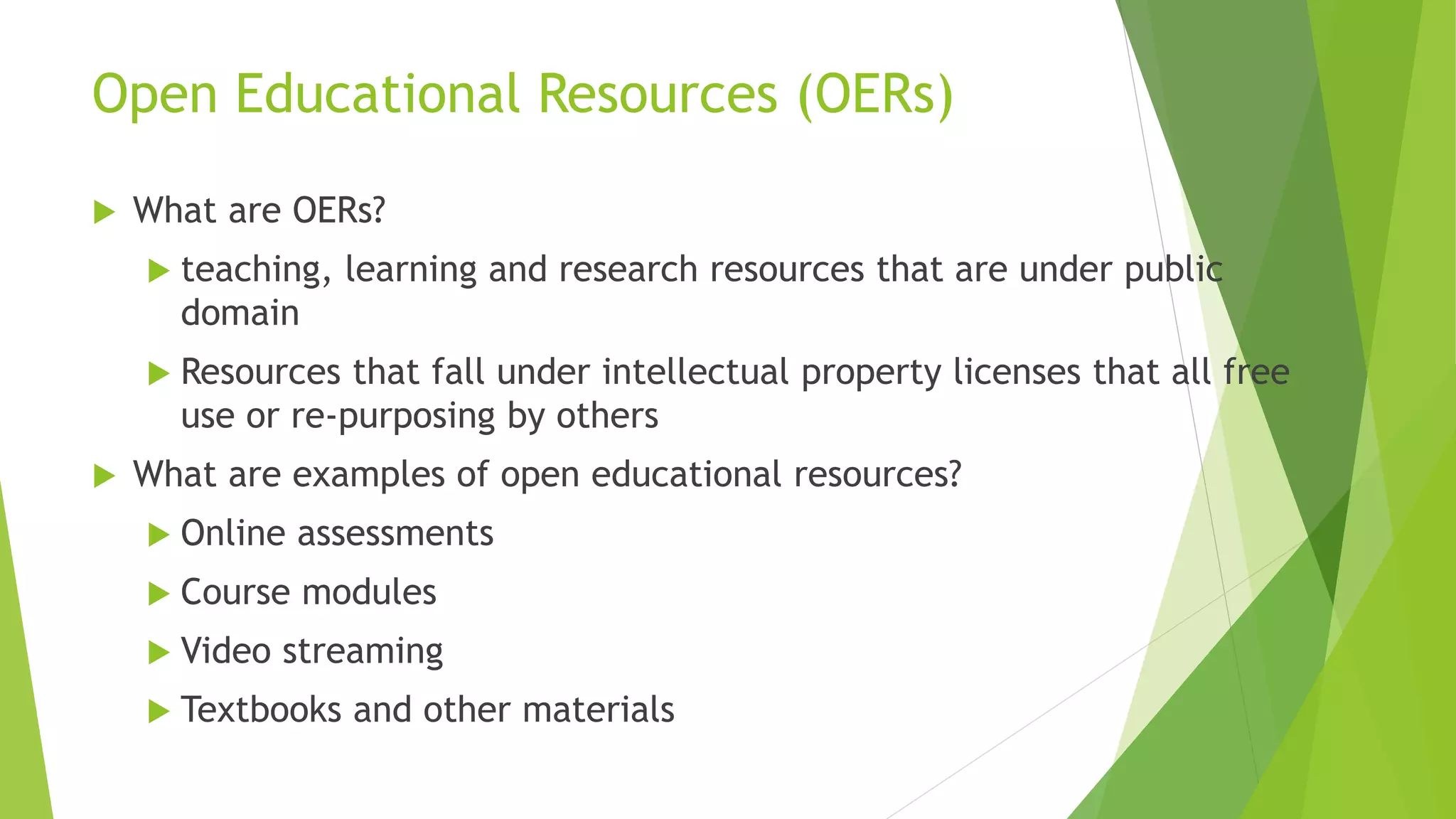
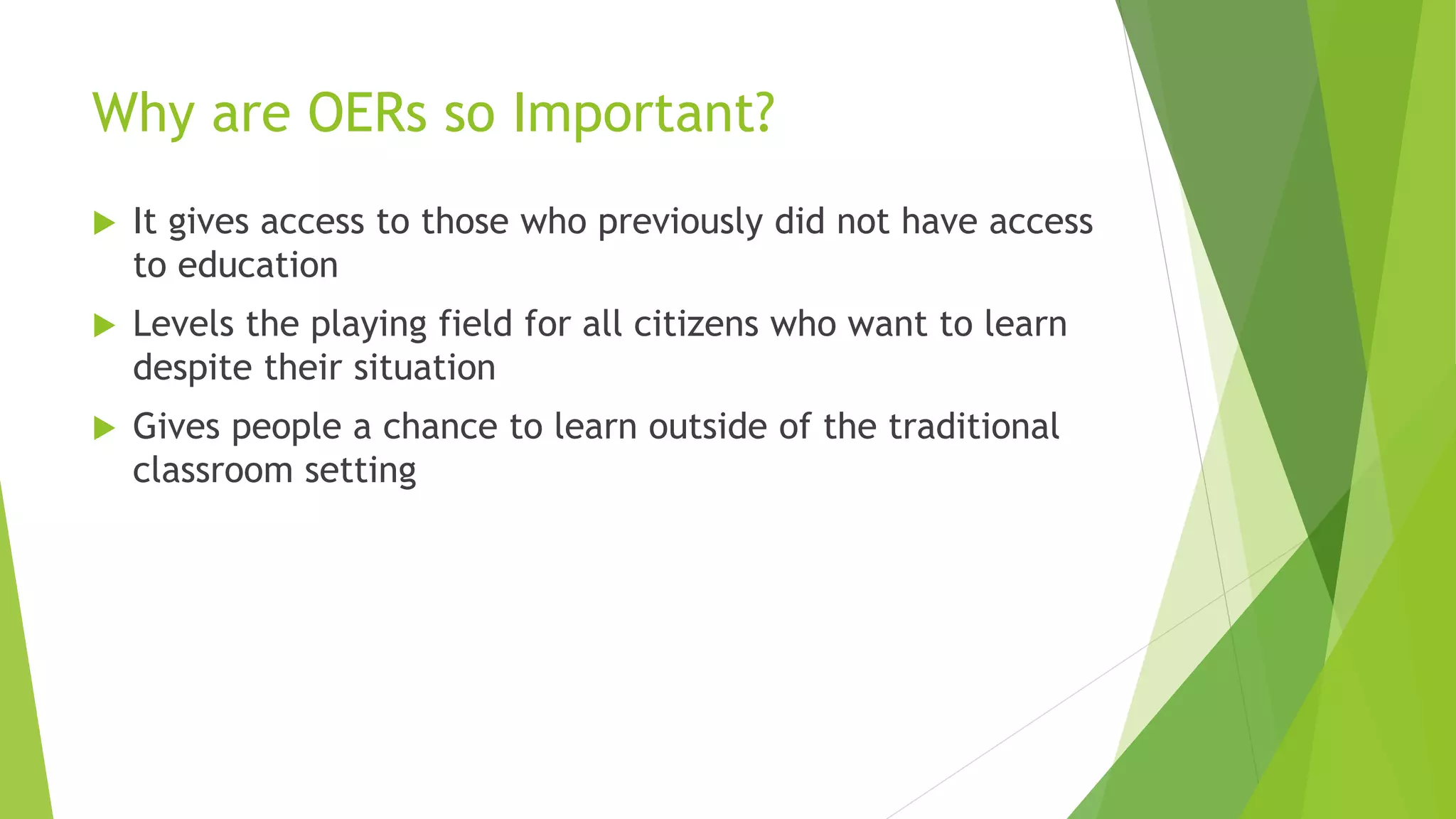

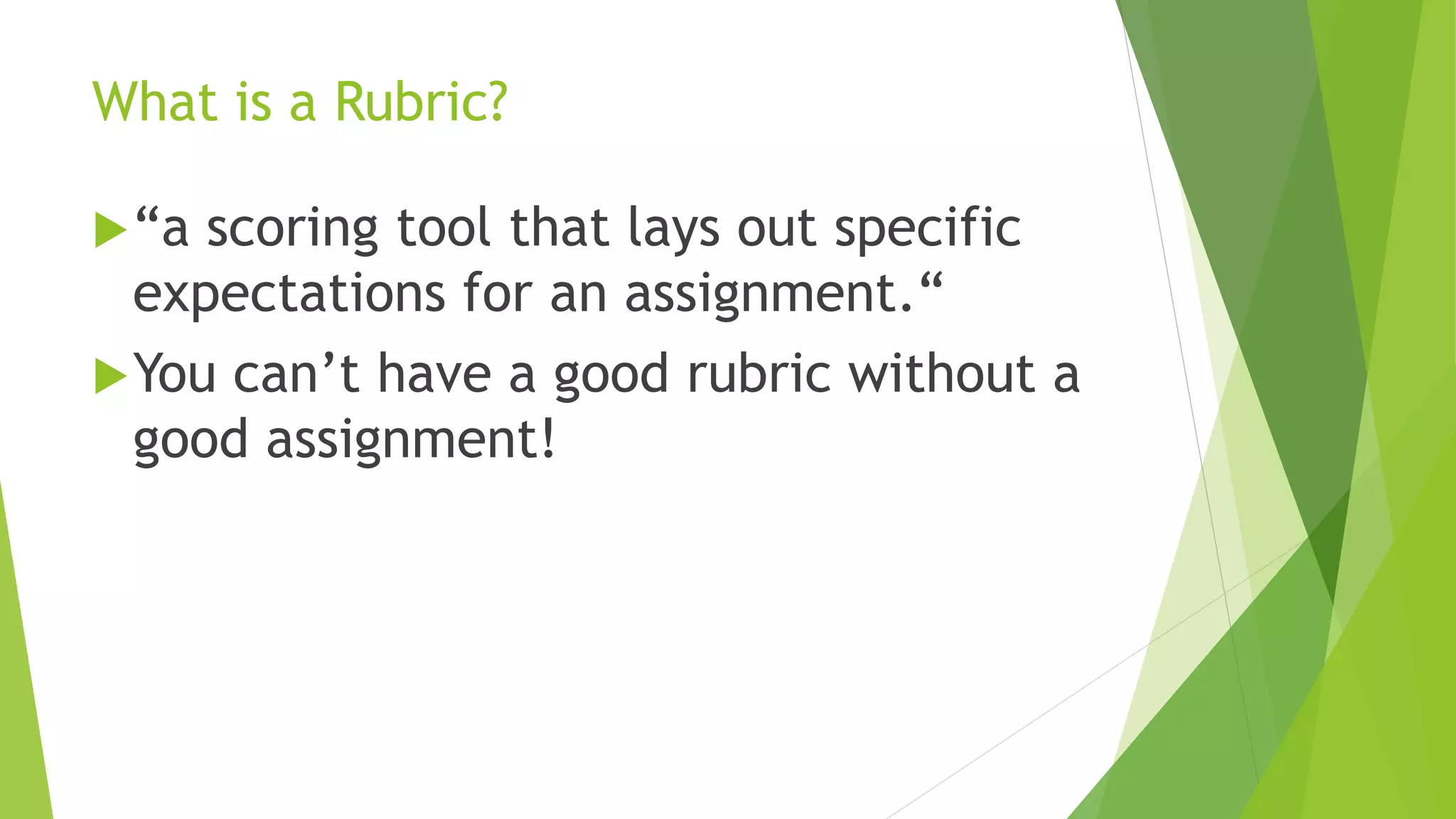
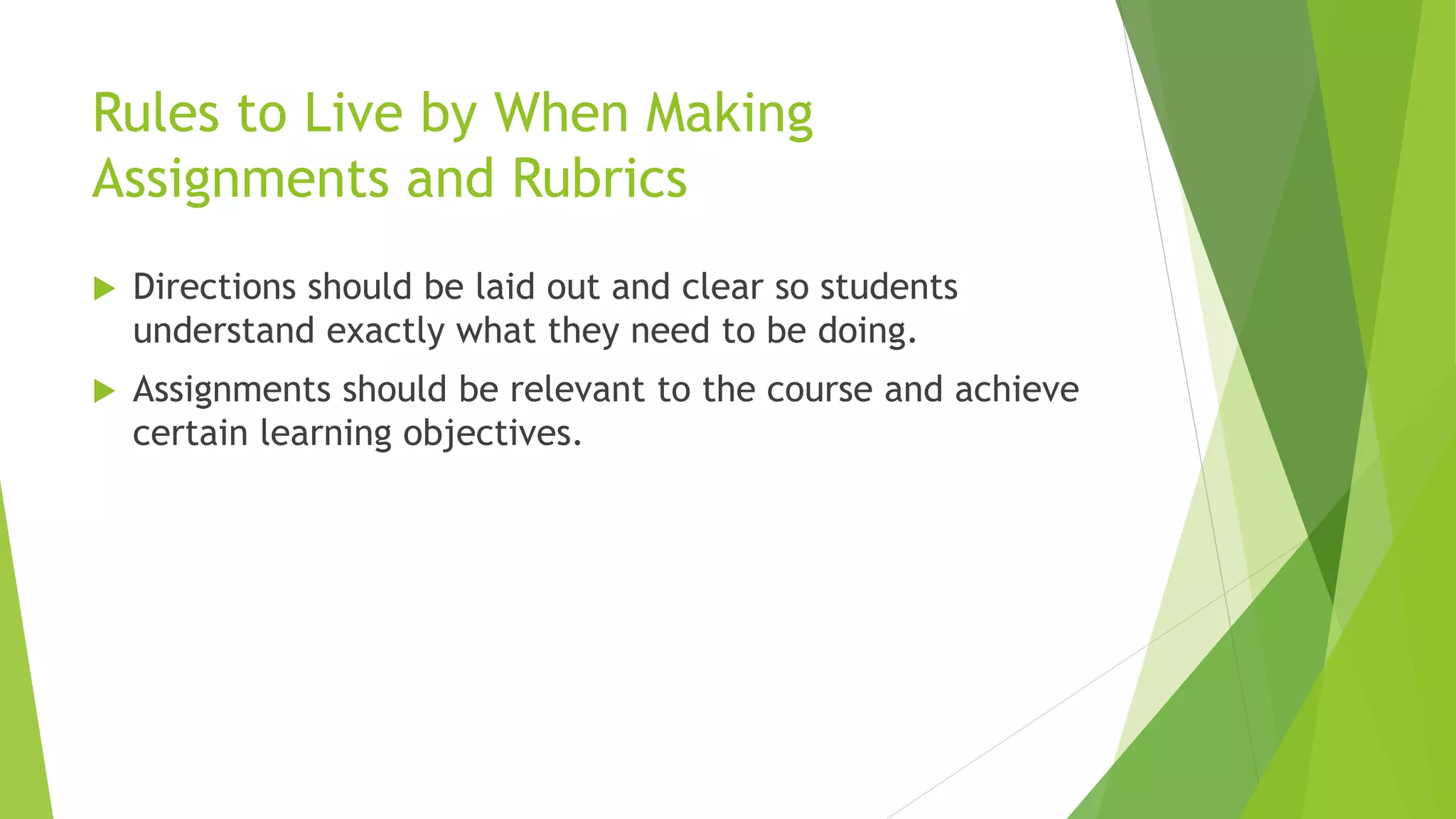
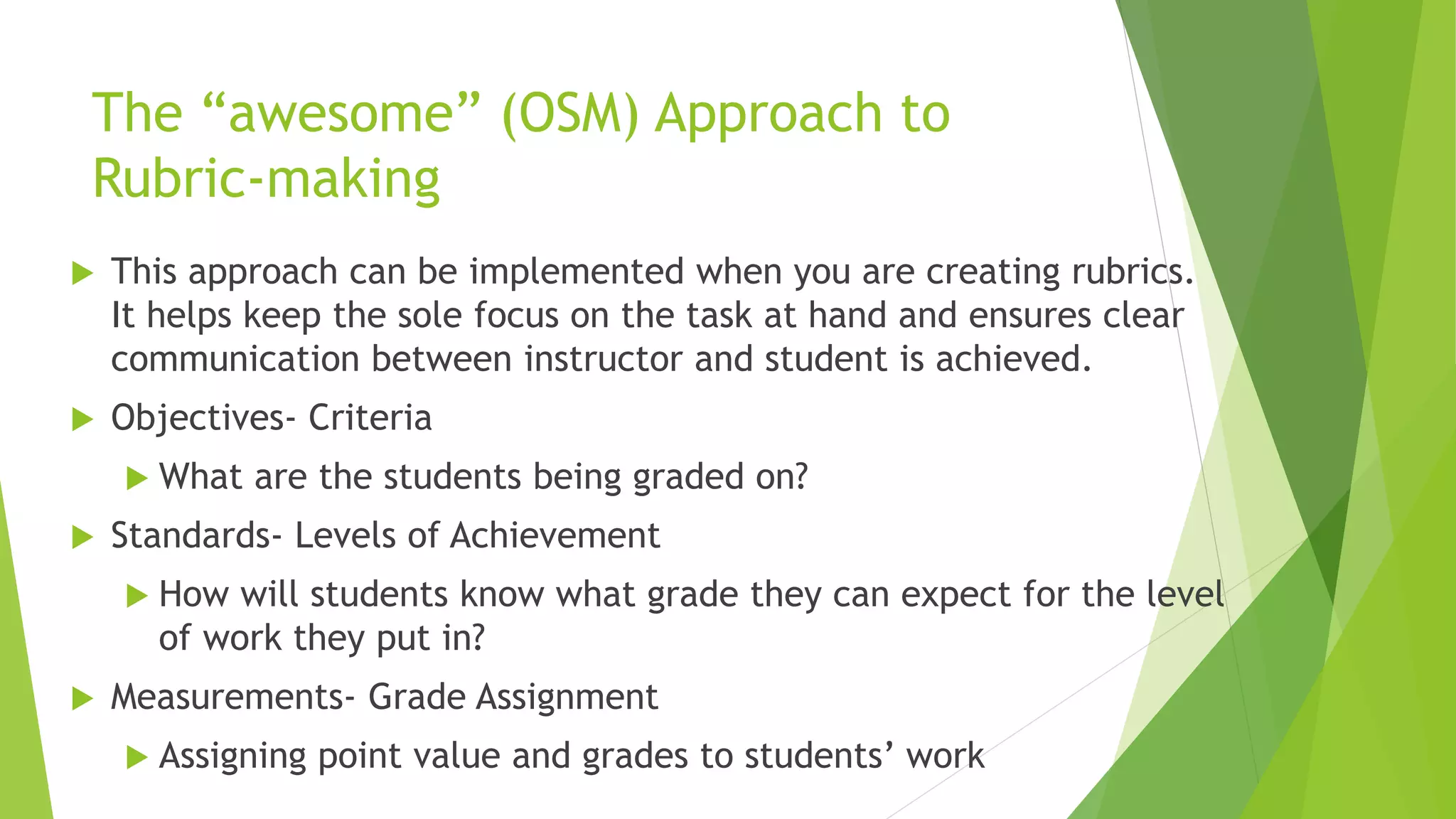
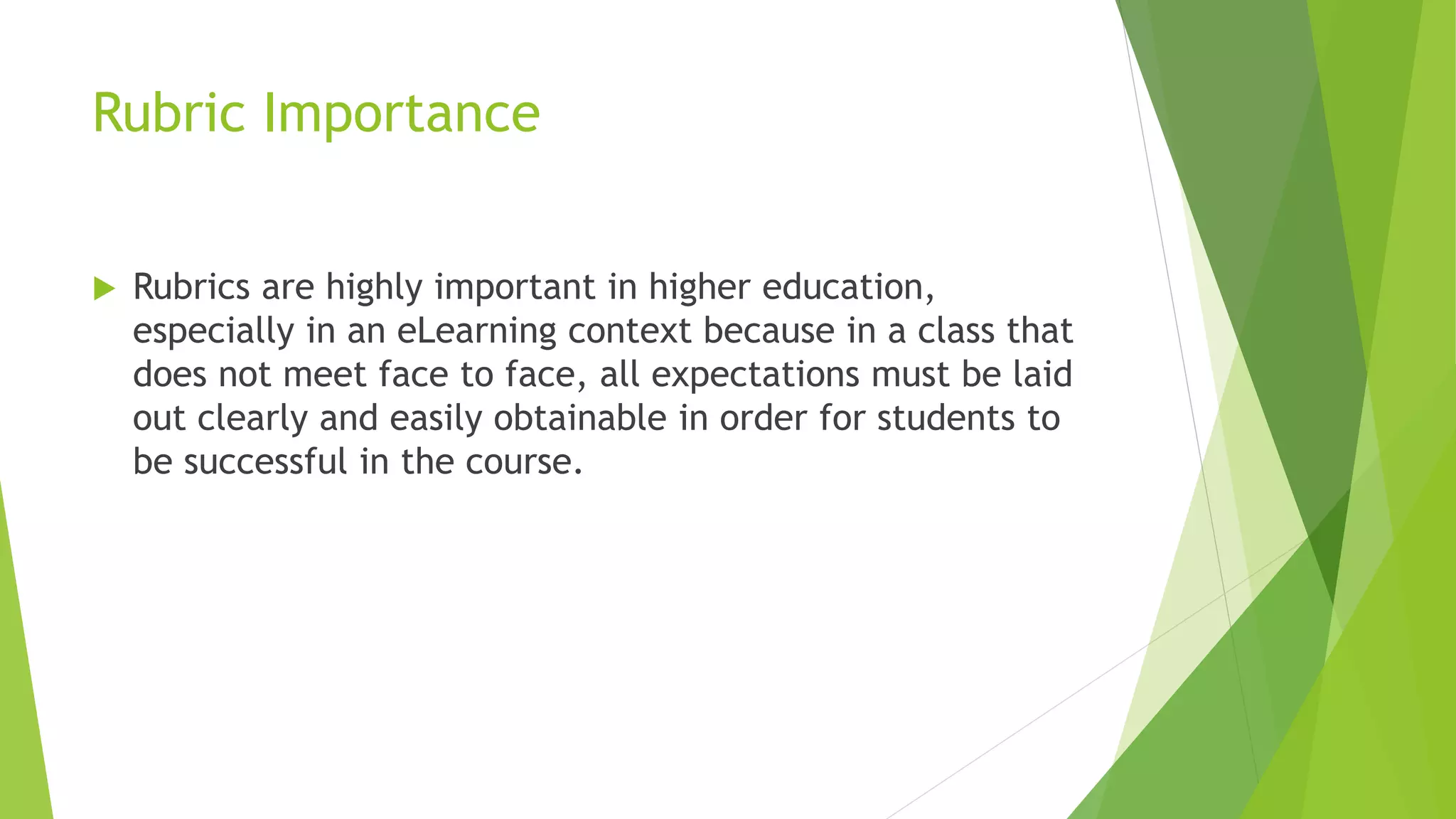
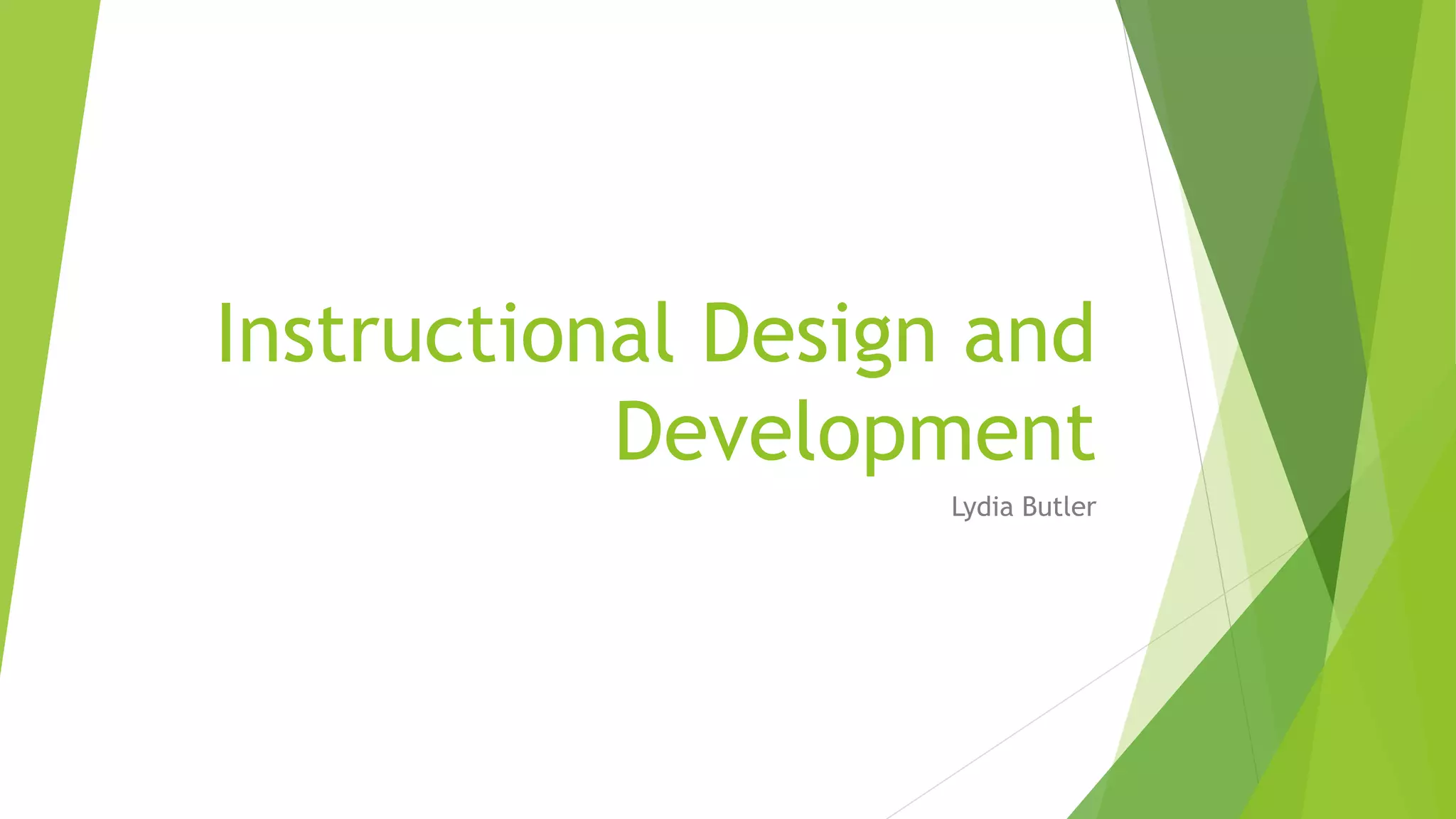
![References
Introduction to Web Accessibility. (2005). Retrieved from:
https://www.w3.org/WAI/intro/accessibility.php#i-what
University of Michigan Faculty Materials Group. (2014). Top 10 instructional
accessibility tips Retrieved from:
http://www.itcs.umich.edu/atcs/instructional-accessibility-tips.php
CAST (2008). Universal design for learning guidelines version 1.0. Wakefield,
MA: Author. Retrieved from:
http://www.udlcenter.org/aboutudl/udlguidelines/udlguidelines_graphicorganizer
Legal obligations for accessibilty. (n. d.) Retrieved from:
http://udloncampus.cast.org/page/policy_legal#.VZmHI_lVikr
Lieberman, S. Rubrics for College - The Easy Steps Way [PowerPoint]. Retrieved from Slideshare
website: http://www.slideshare.net/TeachCollege/rubrics-for-college-the-easy-steps-way
William and Flora Hewlett Foundation (n. d.) Open educational resources. Retrieved from:
http://www.hewlett.org/programs/education/open-educational-resources](https://image.slidesharecdn.com/instructionaldesignanddevelopment-150721022415-lva1-app6891/75/Instructional-design-and-development-14-2048.jpg)